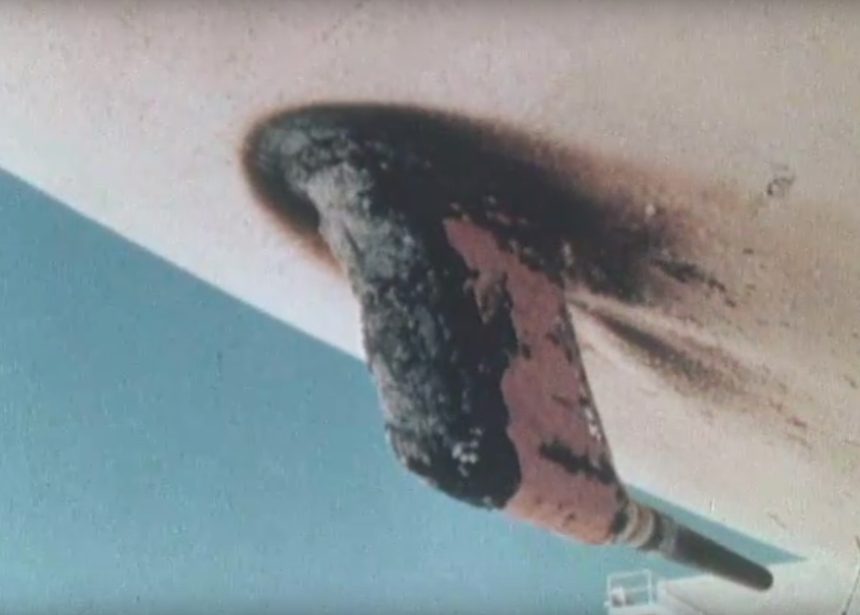Aerodynamic heating at Mach 6.72 (4,534 mph) almost melted the airframe.
On Oct. 3 1967 the North American X-15A-2 serial number 56-6671 hypersonic rocket-powered research aircraft achieved a maximum Mach 6.72 piloted by Major Pete Knight.
Operated by the United States Air Force and the National Aeronautics and Space Administration as part of the X-plane series of experimental aircraft in the 1960s, the X-15 was a missile-shaped vehicle built in 3 examples and powered by the XLR-99 rocket engine capable of 57,000 lb of thrust.
The aircraft featured an unusual wedge-shaped vertical tail, thin stubby wings, and unique side fairings that extended along the side of the fuselage.
The X-15 was brought to the launch altitude of 45,000 feet by a NASA NB-52B “mothership” then air dropped so that the rocket plane would have enough fuel to reach its high speed and altitude test points. Depending on the mission, the rocket engine provided thrust for the first 80 to 120 sec of flight. The remainder of the normal 10 to 11 min. flight was powerless and ended with a 200-mph glide landing.
An interesting account of Oct. 3, 1967 record flight was written by Flight Engineer Johnny G. Armstrong on his interesting website. Here’s an excerpt:
As the X-15 was falling from the B-52 he lit the engine and locked on to 12 degrees angle of attack. He was pushed back into his seat with 1.5 g’s longitudinal acceleration. The X-15 rounded the corner and started its climb.
During the rotation as normal acceleration built up to 2 g’s Pete had to hold in considerable right deflection of the side arm controller to keep the X-15 from rolling to the left due to the heavier LOX in the left external tank. When the aircraft reached the planned pitch angle of 35 degrees his scan pattern switched from the angle of attack gauge to the attitude direction indicator and a vernier index that was set to the precise climb angle.
The climb continued as the fuel was consumed from the external tanks, then at about 60 seconds he reached the tank jettison conditions of about Mach 2 and 70,000 feet. He pushed over to low angle of attack and ejected the tanks. He was now on his way and would not be making an emergency landing at Mud Lake.
“We shut down at 6500 (fps), and I took careful note to see what the final got to. It went to 6600 maximum on the indicator. As I told Johnny before, the longest time period is going to be from zero h dot getting down to 100 to 200 feet per second starting down hill after shutdown.”
Final post flight data recorded an official max Mach number of 6.72 equivalent to a speed of 4534 miles per hour.
From there down Pete was very busy with the planned data maneuvers and managing the energy of the gliding X-15. He approached Edwards higher on energy than planned and had to keep the speed brakes out to decelerate.
On final approach he pushed the dummy ramjet eject button and landed on Rogers lakebed runway 18. He indicated he did not feel anything when he activated the ramjet eject and the ground crew reported they did not see it. Pete said that he knew something was not right when the recovery crew did not come to the cockpit area to help him out of the cockpit, but went directly to the back of the airplane.
Finally when he did get out and saw the damage to the tail of the X-15 he understood. There were large holes in the skin of the sides of the fin with evidence of melting and skin rollback. Now we are talking Inconel-X steel that melts at 2200 degrees F. Later analysis would show that the shock wave from the leading edge of the ramjet’s spike nose had intersected the fin and caused the aerodynamic heating to increase seven times higher than normal. So now maybe we knew why the ramjet was not there.
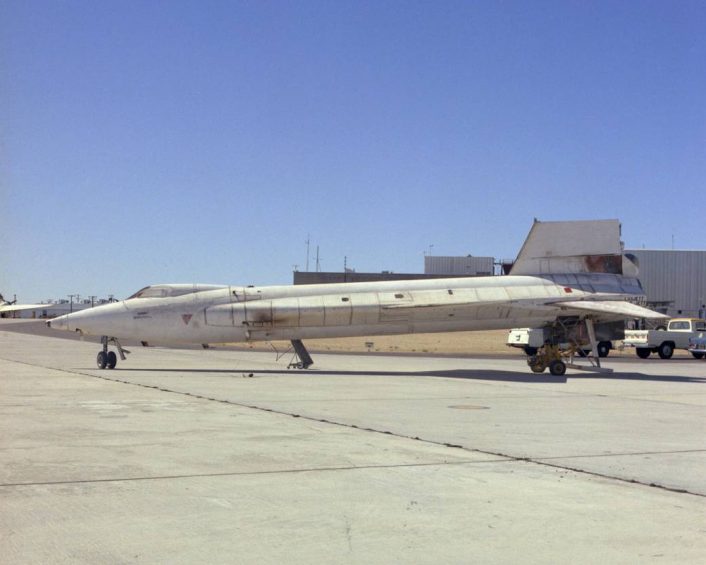
The following 48-sec footage shows the extent of the damages to the X-15-2 aircraft. Noteworthy, the ramjet detached from the aircraft at over 90,000 feet and crashed into the desert over 100 miles from Edwards Air Force Base.
Here are some details.
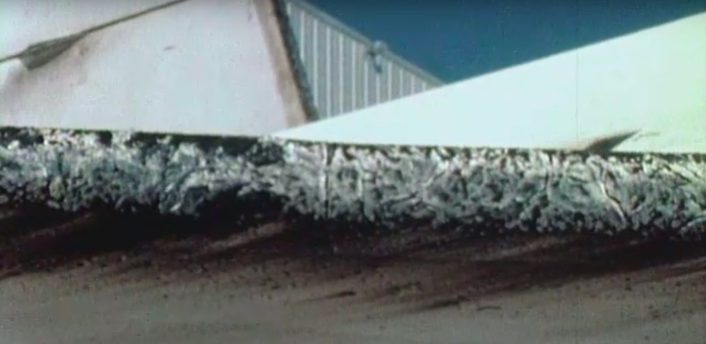
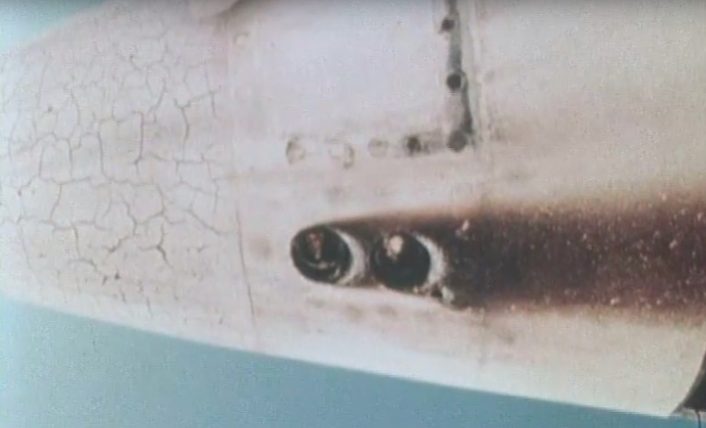
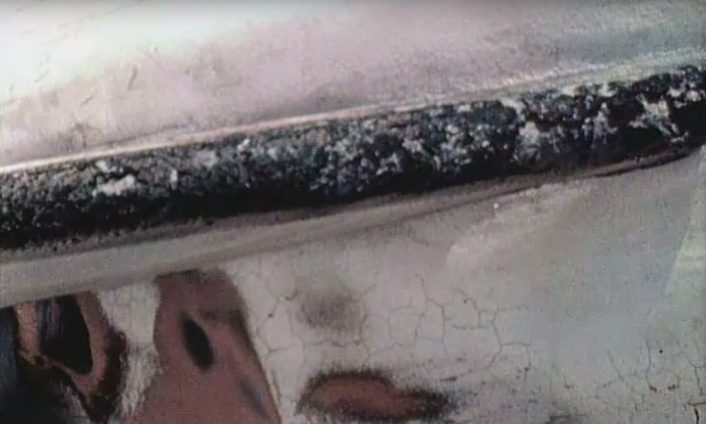
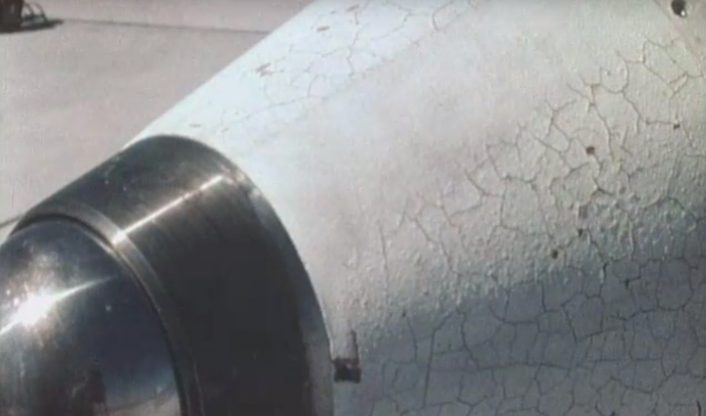
The X-15A-2 never flew again after the record flight. It is currently preserved and displayed at the United States Air Force Museum, Wright-Patterson AFB, Ohio.
The top image shows the damage to one of the two ventral UHF antennas of the X-15.

